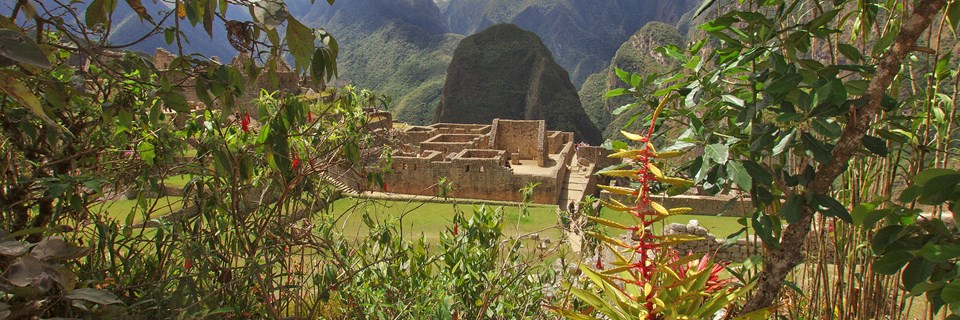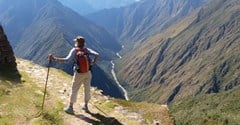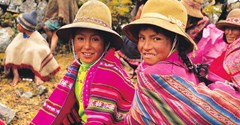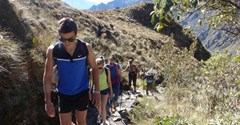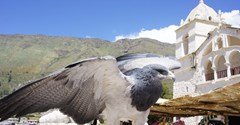Our series focusing on the ancient civilisations of Latin America continues with the vast Inca empire and the heritage they left behind.
Latin America's ancient civilisations: the Incas
The well-preserved archaeological sites of ancient Pre-Columbian civilisations have allowed experts to piece together what life was like in Latin America, all those centuries ago. When overlaid by the sweeping cultural and architectural changes brought forth by European colonisers in the 16th century, this blend provides a platform on which our expert local guides can lead you on a panoramic journey through history, which spans millennia.
Better yet, most ruins are found in extraordinary landscapes; Andean mountains, tropical jungle, Caribbean beaches or vast desert and are accessed from nearby cities in which we can experience modern local life and discover which ancient traditions and customs continue to thrive today.
We continue our journey through the most important ancient cultures and civilisations of Latin America with the famous Incas and their empire that spanned a continent.
Getting to know the Incas
Where: The Inca empire spread out throughout the Andean region, from its heartland in Peru and Bolivia, up to Ecuador and Colombia and as far south as Argentina and Chile. It was believed to have peaked at some 12 million inhabitants across various ethnic groups and languages. As well as Machu Picchu, some of the most important sites were the capital Cusco, the true 'lost city' of Vilcabamba (that which Hiram Bingham was searching for when he discovered Machu Picchu) and the hilltop complexes of Ollantaytambo and Pisac in the Sacred Valley of the Incas.
When: Early 13th to 16th century
Key figures: The three most important Inca gods were Viracocha, the creator god who rose out of the mythical waters of Lake Titicaca to create the sun, the moon and the stars and the people of the Inca empire, the rain god Apu Illapu and perhaps most importantly Inti - the sun god. Inti's son Manco Capac was believed to have been the first Inca emperor, having established the empire in Cusco. Pachamama was the earth goddess, to whom the Inca people made offerings and sent prayers in return for bountiful harvests. Indeed it is a practice which continues to this day.
Characteristics: The Inca empire was based on a series of religious deities, such as those described above and an unwavering belief is cosmology. Together it was these factors that would determine the success or otherwise of their harvest cycles. They are also renowned for the engineering brilliance, so spectacularly evidenced in their ingenious agricultural terracing system of irrigation and the perfectly proportioned temples, tombs, fountains and myriad other buildings of their cities and citadels. Remarkably, the constructions were made without industrial machinery or transportation with which to shape and move the enormous pierces of stones across vast distances, and were pieced together without mortar or plans to work from. Additionally the Incas did not have a central written language or currency, paying taxes with produce or valuable goods.
Heritage: Today we can marvel at the ingenuity and might of the Incas at their powerful hilltop citadels and terraces in the Sacred Valley and of course, the lost citadel of Machu Picchu, shrouded in cloud forest and reached via train or the Inca Trail. Sun Island on the Bolivian side of Lake Titicaca is believed to have been the birthplace of the Inca empire, whilst the historic city of Cusco in Peru was its capital and was home to its most important religious complex. Above the city sits the important ruins of the former fortress Sacsayhuaman. Quechua was the main language of the Incas and this can still be heard through the Inca heartland in Peru.
Downfall: The Incas were finally defeated by Spanish colonists in 1572, not just because of the advanced arsenal of weapons that the European invaders had at their disposal, but also the exotic diseases which they brought with them, to which the Incas had no cure. The death of the leaders of the empire also sparked a costly civil war that would further deplete numbers. A number of spirited battles and uprises ensued following the taking of Cusco in 1533, but the Spanish overpowered the last vestiges of the Inca army and set about destroying all traces of the empire, building immense cathedrals and churches were once stood gilded Inca temples.
Suggested tour: Walk the Inca trail to Machu Picchu on our 14 night Chasqui Active tour, from £3,349 per person.
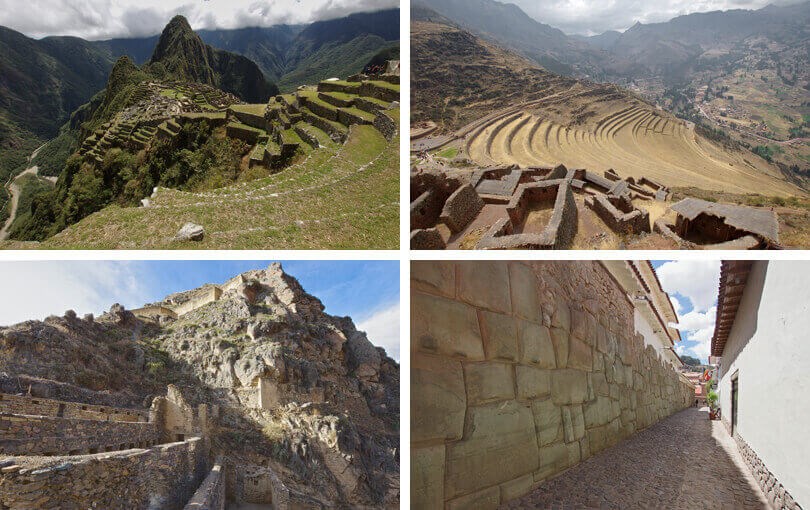 Machu Picchu, Pisac and Ollantaytambo in Sacred Valley & original Inca wall in Cusco
Machu Picchu, Pisac and Ollantaytambo in Sacred Valley & original Inca wall in Cusco
Sources: history.com & ancient.eu
Choose your perfect holiday
Find inspiration from our selection of itinerary suggestions, a great starting point for your next trip
View More Tours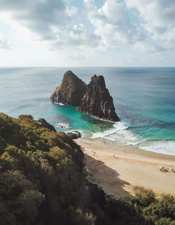
Stay in touch
Infuse your travels, with inspiration from our monthly newsletter.
READY - 20 April 2024
LANDMARK TOURS: Multi-Country & Cross Continent. New Cosmopolitan Tour: Buenos Aires, Iguazu, Rio
CHINA & INDIA: Local Life, People & Unique Cultures
GUIDES by Veloso Tours, are the best Local Hosts
PRIVATE VILLAS: Quality Time in exclusive settings
TRAVEL INSURANCE with extensive COVID-19 cover
